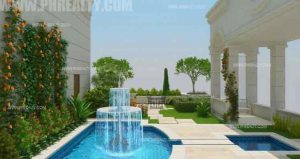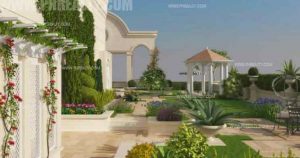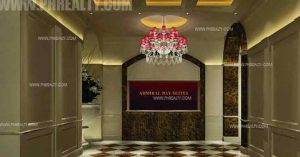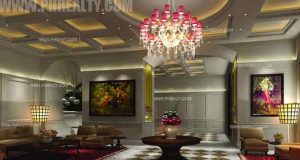Posts in Category: Business
Air Conditioning Adelaide: The Benefits of Ducted Air Conditioning
When it comes to choosing the best air conditioning for your home, you have a lot of options. One of the most popular choices in Adelaide is ducted air conditioning.
Ducted air conditioners are discreet because they’re hidden in your roof or the ceiling space. They also look better than split systems. For quality air conditioning Adelaide, check out ducted air conditioning Adelaide now.
Aesthetics
Ducted air conditioning in Adelaide uses ducts to distribute cooled and heated air throughout your property. The ducted system is hidden from view and doesn’t require bulky wall units, making it perfect for customers who prefer a sleek and seamless aesthetic for their home or business.
 The ducts are subtlely integrated into the ceiling and blend seamlessly into your home or business decor, so you won’t have to worry about them obstructing your views. The indoor unit is also located away from bedrooms, which can help you achieve a good night’s sleep without the noise of a compressor operating nearby.
The ducts are subtlely integrated into the ceiling and blend seamlessly into your home or business decor, so you won’t have to worry about them obstructing your views. The indoor unit is also located away from bedrooms, which can help you achieve a good night’s sleep without the noise of a compressor operating nearby.
Customisation
Air conditioning systems are available in various sizes and styles to suit your home. They can be installed in the ceiling, walls, or a combination. Ducted systems offer a discreet look as the indoor unit is hidden in the roof, and the airflow is delivered through low-profile vents in the ceiling or walls.
You can choose from square or round ducting with insulation and a range of finishes to compliment your décor. You can also select from a wide range of motorised dampers, branch take-offs, y-collars, plenums, or boots and grilles to create the right look for your Adelaide home. For quality air conditioning Adelaide, check out ducted air conditioning Adelaide now.
Control
With smart home Wi-Fi air conditioning controls, you can adjust your ducted system easily if the airflow is uneven. This saves crawling around on your roof or paying a service company to make these adjustments.
A ducted reverse cycle air conditioner is ideal for our Australian climate as it controls year-round temperature. It is also cost-effective and practical as you can choose which rooms to heat or cool and stop airflow in those you don’t use.
A ducted system is discreet and will blend into your interior design. It is an attractive alternative to split systems and will add value to your property.
Efficiency
Ducted air conditioning is more energy efficient than other air conditioners, particularly those with multiple zones. The zoning system lets you turn off zones when they aren’t being used, maximising energy efficiency.
Unlike evaporative cooling, which relies on less humid outside air to work, ducted systems use refrigerated air, providing year-round climate control. They’re also a more cost-effective option than wall split systems.
Modern ducted air conditioning Adelaide systems are designed with inverter technology, which further reduces your energy consumption. This means they’re better for the environment and your electricity bill. They’re also quieter than older models. Having one in your home can add value and impress any potential buyers.
Convenience
Cool and warm air is delivered to each room via ducting in a ducted system. This makes them ideal for households with multiple rooms and people living in different spaces daily.
Ducted systems are also relatively low noise. They are designed to be hidden in your ceilings so they do not disturb your daily activities. For quality air conditioning Adelaide, check out ducted air conditioning Adelaide now.
Additionally, ducted reverse cycle systems consume less energy than other air conditioners. This can significantly reduce your power bill. A zoning feature allows you to close off the air conditioning in unused rooms to save more energy. This feature will help you to reduce your power consumption and energy costs without affecting your comfort levels.
Cost
A ducted air conditioner can cost more upfront but is often the most cost-effective solution. It eliminates the need to cool multiple rooms with separate units and can be installed in homes of any size.
Choosing an air conditioning installer who is licensed and has experience handling refrigerants is essential. It’s also necessary to ensure your installed system is correctly sized for your home.
Buy Acoustic Guitar: Factors to Consider When You Buy an Acoustic Guitar
No matter whether your musical journey involves shredding Wembley Stadium with thunderous metal or locking yourself away after a break-up to record lo-fi indie folk, an acoustic guitar is an indispensable companion on your path. Finding or buy acoustic guitar is not easy, so it is crucial to know what factors to look out for when shopping around for one.
Budget
 “You get what you pay for,” as they say. This statement certainly applies to guitars; musicians with unlimited budgets can experiment with them endlessly by swapping out materials and strings; however, each guitar produces one distinct sound.
“You get what you pay for,” as they say. This statement certainly applies to guitars; musicians with unlimited budgets can experiment with them endlessly by swapping out materials and strings; however, each guitar produces one distinct sound.
Setting a reasonable budget before beginning shopping is one way to ensure success, and remembering to factor in any hidden costs like cases/gig bags/capos for changing keys as well as new strings may add up quickly. Other things to keep in mind may include size/body shape (parlour/concert/dreadnought). All these buy acoustic guitar elements contribute to its cost; start with less costly models, then upgrade as your expertise progresses.
Style
Acoustic guitars are versatile instruments, capable of fitting in with various musical genres. Before beginning your search for one, ensure that you are knowledgeable of its anatomy, tonewoods and body styles in order to select an instrument that speaks to you and fulfils your musical passions.
The most widely preferred acoustic guitar body style is the battleship, which provides an even tone for strumming and fingerpicking. Other less prevalent body types, like parlour and jumbo guitars, provide unique tonal characteristics tailored to specific playing styles or genres.
Materials
Materials used to craft an acoustic guitar play a significant part in its tone. Spruce is known for producing bright and clear tones that pair well with strumming chords; Cedar offers warm percussive sounds preferred by finger pickers; mahogany has strong tones with a punch; due to wood being an organic material, you may experience variations in looks, rigidity, resonance and even looks within one type. To maximise sound quality, choose solid wood over laminate models.
Notable considerations when buy acoustic guitar include its neck shape and width as they influence its playability. A comfortable feel in your hand and accommodating for your playing style are both hallmarks of quality playback, so experimentation is recommended when finding a pick that works for you. Many manufacturers provide hard cases or gig bags to protect their models during transportation and storage – this ensures your investment from bumps and scratches!
Sound
An acoustic guitar’s sound depends on various factors. These include its construction materials, neck shape and width (which determines string spacing), as well as any features like cutaways that allow players to access higher frets for playing melodies or chords.
Consider what genres and artists inspire your choice in selecting an acoustic guitar; this will allow you to discover which sound and feel work best for you, whether you are just beginning or an experienced guitarist.
Consider whether it would be convenient for you to plug your acoustic into an amp or soundboard when performing live, which opens up more options for sound and tone modification, including effects pedals or changing amplifier EQ settings. But if you prefer playing more intimate settings without an amp, a standard acoustic may be more suitable.
Hardware
There is a wide array of hardware and components on an acoustic guitar. The most important is the soundboard. It is the wooden piece that sits on top of the guitar and plays a crucial role in making the guitar loud enough for you to hear. It is typically made of either solid wood or laminated wood.
The soundboard is attached to a piece called the bridge, which is, in turn, connected to the guitar body via a hole called the soundhole. This piece resonates with the vibrational modes of the strings and the soundboard to transfer energy efficiently to the surrounding air, resulting in a much louder overall tone.
The neck is a long piece of wood that connects the headstock to the body and contains the fretboard, which has raised metal pieces called frets at specific intervals. By pressing the strings down on the fretboard, you change their length and thus a note they produce.




